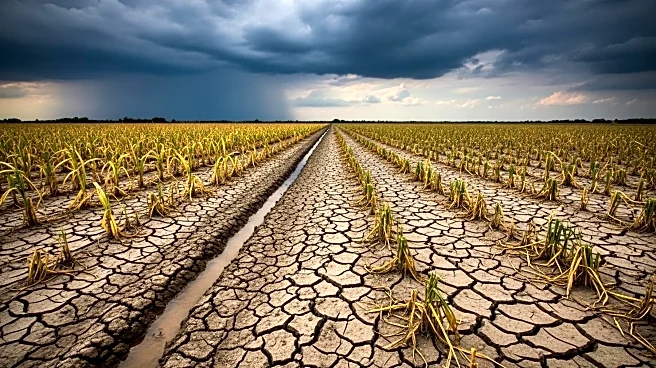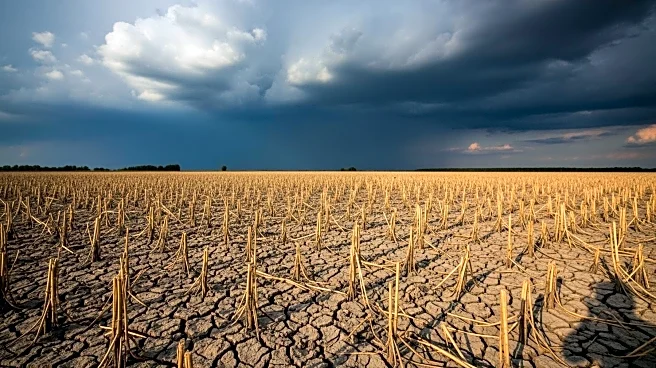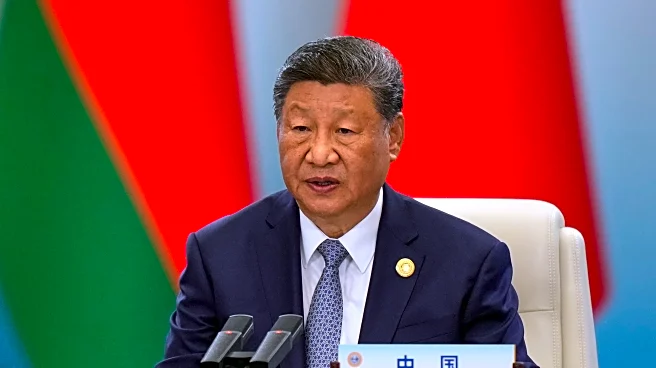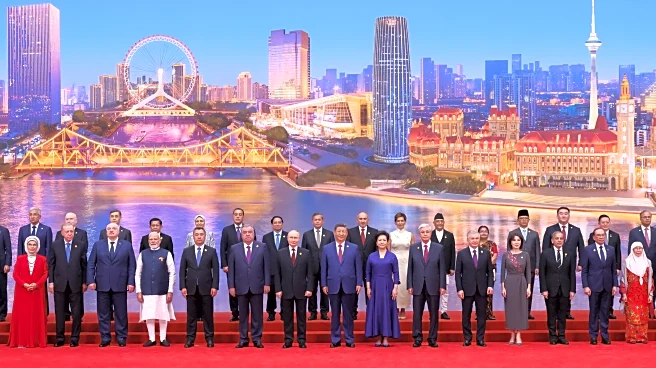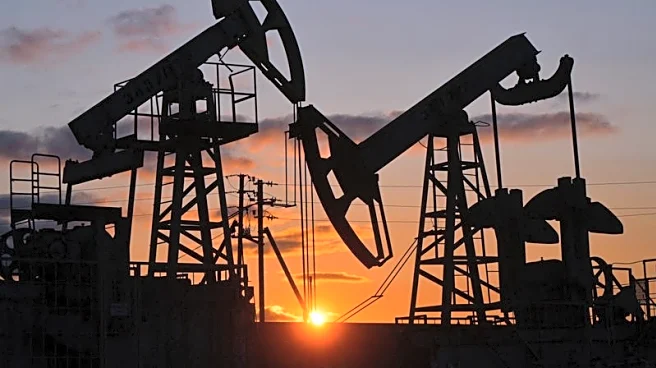What's Happening?
Pakistan's agricultural sector is facing severe challenges due to climate change, affecting key crops like wheat and rice. Rising temperatures, erratic rainfall, and extreme weather events are causing significant declines in crop yields. Wheat production in Punjab has decreased annually, with projections indicating a potential 36-40% decline by 2050 if adaptation measures are not implemented. Rice yields are also highly variable due to temperature fluctuations and excessive rainfall, which have increased pest susceptibility. The 2022 floods in Pakistan, which affected 33 million people and caused $30 billion in economic damage, highlight the vulnerability of the agricultural sector to climate disasters.
Why It's Important?
The agricultural disruptions in Pakistan are reshaping global commodity markets. Although Pakistan is not a top wheat exporter, its reliance on Russian wheat imports makes it vulnerable to geopolitical and climatic shocks. The Russia-Ukraine war has further complicated this situation, leading to increased global wheat prices. Pakistan's ambitious rice export goals face challenges from climate-driven yield volatility and competition from India. The country's push for climate-resilient infrastructure and agri-tech presents investment opportunities, with plans to increase renewable energy and develop flood-resistant housing units.
What's Next?
Pakistan's government is focusing on climate-resilient infrastructure and agri-tech innovations to mitigate climate risks. Projects like the Sindh Flood Emergency Rehabilitation Project aim to reconstruct flood-resistant housing units. In agriculture, initiatives such as Punjab's Smart Basmati Program are improving yields and reducing rejections in global markets. The government plans to increase renewable energy from 7% to 60% of the energy mix by 2030, supported by private investments through public-private partnerships.
Beyond the Headlines
Pakistan's climate vulnerabilities are reflected in its ESG ratings, with high greenhouse gas emissions and low renewable energy adoption. The country faces a projected 5.3°C temperature rise by 2050, posing significant risks to global investors. Underinvestment in climate adaptation could lead to systemic shocks, including substantial losses in wheat and rice output and GDP reductions due to climate-related risks. The situation underscores the need for investors to integrate climate resilience into their strategies.
